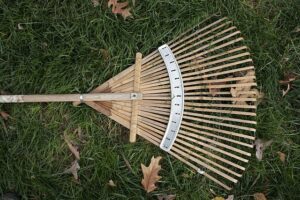 Though we’re having some unseasonably warm weather this week, the growing season is steadily drawing to a close. Don’t put your hose away yet! There are a number of important tasks to be done in the garden before we finally close the door on the 2016 season. Many of these tasks, though small, will help prepare your garden for winter and for a successful spring.
Though we’re having some unseasonably warm weather this week, the growing season is steadily drawing to a close. Don’t put your hose away yet! There are a number of important tasks to be done in the garden before we finally close the door on the 2016 season. Many of these tasks, though small, will help prepare your garden for winter and for a successful spring.
Cleaning Up
You’re probably already quite busy raking up fallen leaves on your lawn, but don’t forget about your garden beds! Though clean, healthy leaves can be left on the ground over the winter, you should remove and throw out leaves from plants with pest or disease issues. If you allow infected leaves to remain on the ground over the winter, there is a good chance nearby plants will be re-infected the following season. This is especially true for roses. Good fall clean-up can greatly reduce the prevalence of black spot on roses the following season.
Cutting Back
While you’re clearing out your beds you might be tempted to prune your trees and shrubs back, but we strongly advise against this. However, after a few hard frosts your perennials will have turned brown and died back. You can safely remove this dead material. If you’re not keen to do it now, you can just as easily leave the dead material and clean it up in the spring.
Mulch Susceptible Plants
Mulch is great for water retention during the growing season, but in the winter it also doubles as an insulator. Acting as an extra layer of organic matter, mulch will protect the roots of your plants from excessive cold in particularly harsh winters. Mulching evergreens that are newly-planted or are in a particularly exposed area can also mitigate winter damage.
Rodent-Proofing
If foraging critters such as rabbits, deer, or mice frequent your garden in the winter, be sure to put spiral mouse guards on your trees to protect them. You can also use repellant — Bobbex is an environmentally-safe repellant that can be sprayed on susceptible plants in the fall to protect them for the winter.
Rose Protection
Once your roses have lost all of their leaves and the temperatures are consistently cool, heap soil or mulch around the base of your roses to protect their crowns (the most vulnerable part of the plant) for the winter. You can also use rose collars for this purpose. Do not prune back your roses to fit them into a Styrofoam rose house.
Lawn Fertilizer
We go into this in more detail in our recent blog, but late fall is the best time to fertilize your lawn. Timing is critical, but when done correctly, you can substantially improve your lawn’s winter hardiness. Fall fertilizing will also allow your lawn to re-establish much quicker the following spring.
Watering Evergreens
Because evergreens don’t go completely dormant in the winter, they are at risk of winter damage from moisture loss and extreme cold. This is especially a problem if we go through periods of thawing and re-freezing. Evergreens planted in exposed sites are the most susceptible to this issue. You can help alleviate both of these by watering all of your evergreens thoroughly just before the ground completely freezes in the late fall.
We have a winter garden preparation checklist right here. Use it to make sure you don’t miss a beat this fall!
